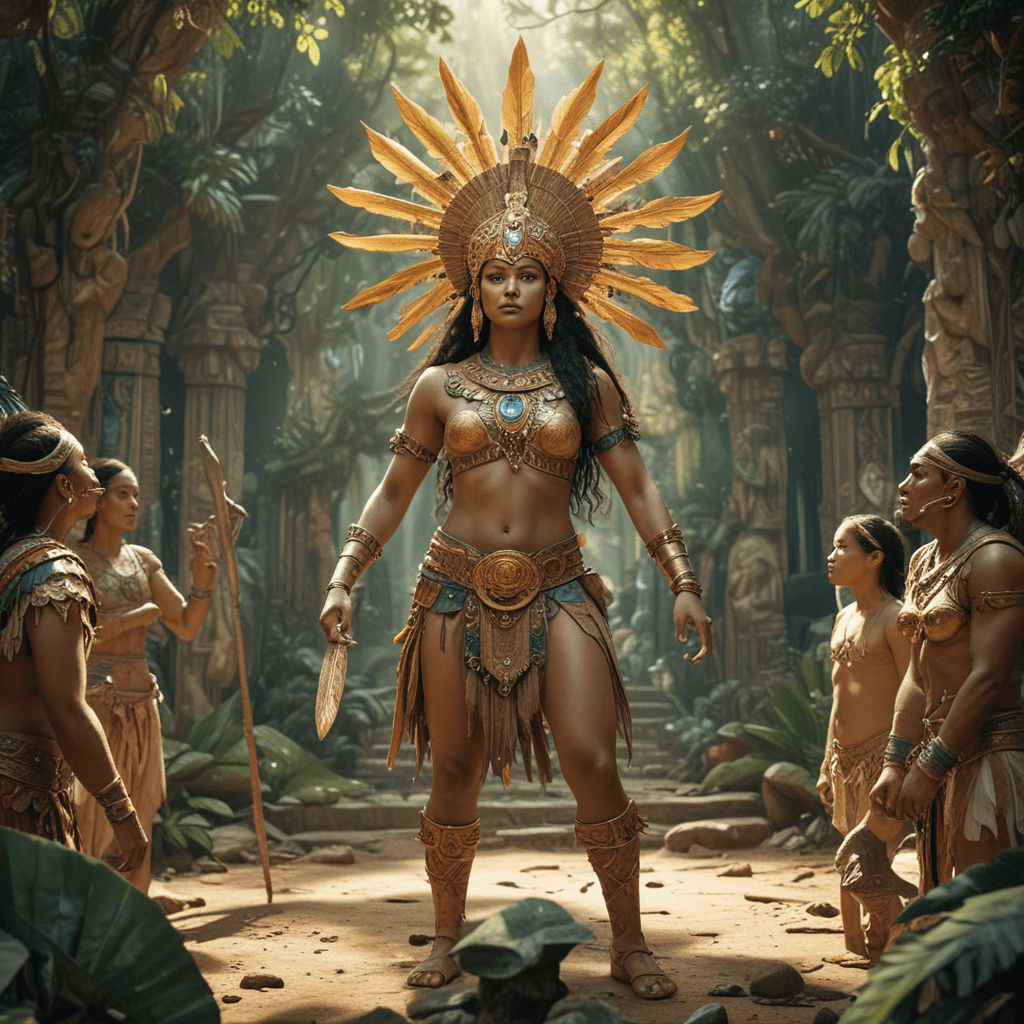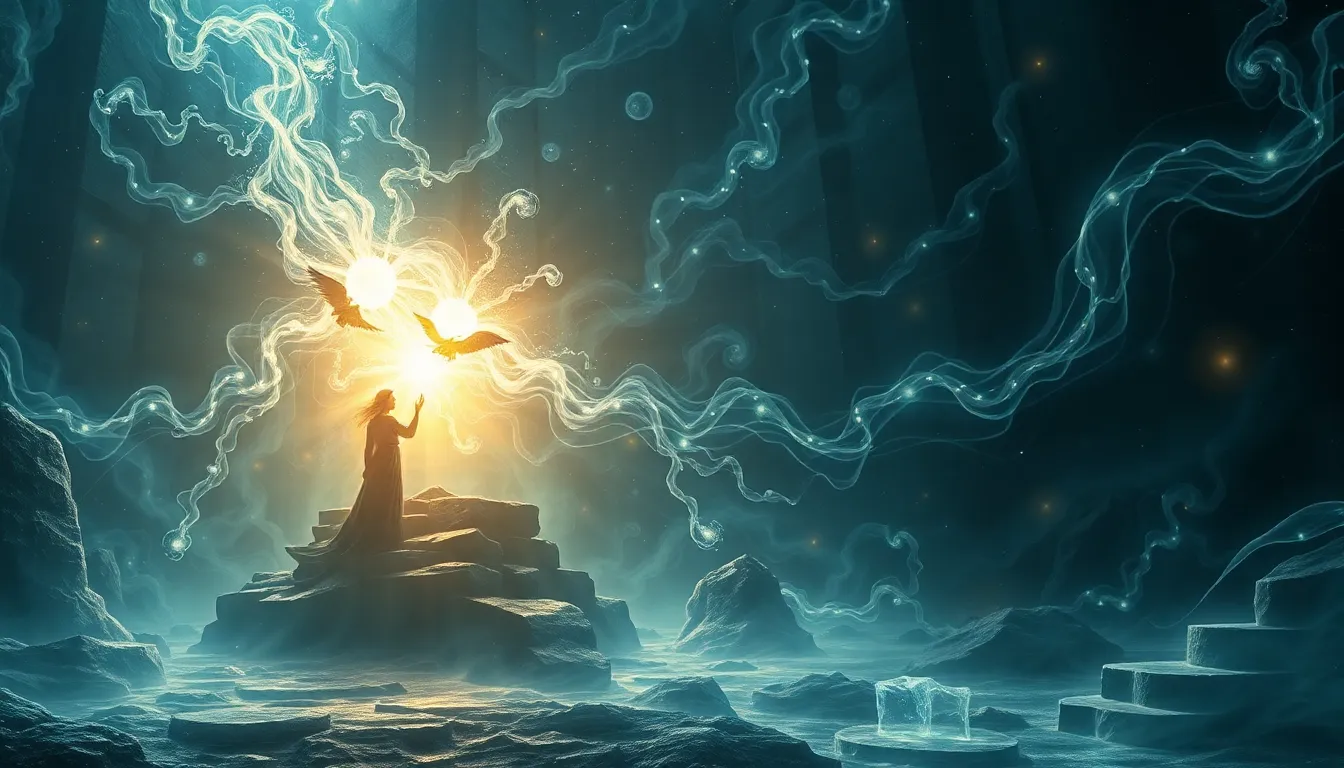Baltic Mythology: A Tapestry of Creation Myths
The Baltic region, a land steeped in ancient folklore and mythology, offers a rich tapestry of creation stories. These myths, passed down through generations, provide fascinating insights into the beliefs and values of the ancient Baltic people. Unlike many other mythologies, Baltic creation myths are not centered around a single, dominant deity. Instead, they feature a diverse cast of gods, goddesses, and mythical creatures who play roles in the creation and shaping of the world.
Baltic mythology offers a unique lens through which to explore the human fascination with origin stories. These stories help us understand the origins of the world, the nature of life and death, the roles of gods and humans, and the significance of the natural world. They also provide valuable insights into the ancient Baltic people's beliefs about the universe, their place within it, and the forces that govern their lives.
The World Tree and the Cosmic Egg: Key Themes in Baltic Creation Stories
Two prominent themes often emerge in Baltic creation myths: the world tree and the cosmic egg. The world tree, often referred to as the Oak of the World or the "World Ash," represents a central element in the cosmos, connecting the heavens, the earth, and the underworld. It symbolizes the interconnectedness of all things, and its branches often serve as dwelling places for gods and spirits.
The cosmic egg, another recurrent motif, represents the potential for creation, holding within it the seeds of all that is yet to be. The egg's breaking is often seen as the birth of the universe, releasing the forces that shape the world.
These themes, though seemingly disparate, are intricately linked. The world tree, with its roots anchored in the earth and its branches reaching towards the heavens, embodies the cosmic order and stability. The cosmic egg, however, represents the chaotic, creative energy that gives rise to existence. Together, they reflect the ancient Baltic people's understanding of the universe as a complex interplay of order and chaos, creation and destruction.
The Role of Divine Beings: Creators, Protectors, and Tricksters
Baltic creation myths are populated by a variety of divine beings who play distinct roles in the creation process. Some are the primary creators, shaping the world and initiating the first life, while others act as protectors or guardians of specific aspects of the cosmos.
- Dievs: The most prominent deity, Dievs, is often depicted as a sky god, responsible for the creation of the world and the heavens.
- Perkūnas: The god of thunder, Perkūnas, is a powerful figure who wields the power of lightning and storms. He is often associated with fertility and the protection of the earth.
- Laima: The goddess of fate, Laima, plays a crucial role in the lives of humans, determining their destinies and influencing their choices.
- Velnias: A trickster figure, Velnias, is a force of chaos and mischief, often challenging the order of the world and tempting humans to stray from the path of righteousness.
These are just a few examples of the many divine beings featured in Baltic creation myths. Each deity, with its unique powers and attributes, contributes to the rich tapestry of creative narratives that shape the Baltic mythology.
The Birth of Earth and Sky: A Common Narrative Thread
A recurring theme in Baltic creation myths is the separation of the earth and sky. The creation of the world often begins with a primordial state of unity, where the earth and sky are indistinguishable. This unity is then disrupted by the actions of gods or cosmic forces, leading to the separation and the establishment of the distinct realms of earth and sky.
In some versions of the myth, the sky is held up by pillars, creating a distinct boundary between the mortal world and the celestial realm. This separation is often associated with the rise of order from chaos, with the creation of distinct realms reflecting the ancient Baltic people's understanding of the universe as a structured and organized system.
The Origins of Humans: From Clay, Stone, or a Divine Spark?
Baltic creation myths offer varied accounts of the origins of humans. Some myths depict humans as being formed from clay or stone, while others describe them as being created from divine sparks or breaths. These narratives reflect a range of perspectives on the relationship between humans and the divine.
The creation of humans from clay or stone emphasizes the earthly nature of humanity, connecting us to the physical world. The divine spark or breath, on the other hand, highlights the spiritual element of our existence, suggesting that humans are infused with a divine essence.
These contrasting narratives reflect the complex understanding of humanity's place in the world, acknowledging both the physical and the spiritual dimensions of our being.
The Importance of Water in Baltic Creation Myths
Water plays a crucial role in many Baltic creation myths, often serving as a source of life and a symbol of creation. In some narratives, the world is born from the depths of a primordial ocean, reflecting the belief that water is the origin of all things. The act of dipping into water is often associated with purification and rebirth, emphasizing the transformative and regenerative powers of water.
The abundance of lakes, rivers, and seas in the Baltic region likely contributed to the prominence of water in their mythology. Water was a vital resource for the ancient Baltic people, sustaining life and providing sustenance. Their reverence for water is reflected in their myths, where it is often portrayed as a sacred element, capable of both creation and destruction.
The Influence of Indo-European Mythology: Shared Themes and Divergent Interpretations
Baltic mythology shares common threads with other Indo-European mythologies, including those of the Greeks, Romans, and Norse. This shared heritage is evident in the presence of similar themes and motifs, suggesting a common ancestral source for these belief systems.
One striking example is the concept of the world tree, which appears in various forms across Indo-European cultures. In Norse mythology, it is the Yggdrasil, a massive ash tree that connects the nine realms. The Baltic world tree, often referred to as the Oak of the World, similarly serves as a cosmic axis, connecting the heavens, earth, and underworld.
This shared theme suggests a common Indo-European ancestor from which these different mythologies branched out. However, Baltic mythology also exhibits unique characteristics that distinguish it from other Indo-European systems. For example, while the Norse pantheon is dominated by a single, powerful god Odin, Baltic mythology features a more decentralized system with multiple deities, such as Dievs and Perkūnas, sharing power and responsibility.
The Role of Norse Mythology: Connections and Contrasts
Norse mythology, another branch of the Indo-European family, has had a significant influence on the understanding and study of Baltic mythology. While both systems share common themes and concepts, there are also notable differences that distinguish them.
One key difference lies in the emphasis placed on the divine figures. In Norse mythology, the gods play a more active and interventionist role in human affairs, often engaging in wars and battles with giants and monsters. Baltic mythology, on the other hand, presents a more nuanced and less overtly dramatic view of the gods, with a greater emphasis on their role as protectors and guardians.
The treatment of death also differs significantly. Norse mythology features a complex afterlife with a prominent underworld, Valhalla, where fallen heroes are sent to fight alongside Odin. Baltic mythology, however, presents a less defined afterlife, often focusing on the journey of the soul to a distant, shadowy realm.
The Mystery of the Baltic Creation Myth’s Origins: Theories and Interpretations
The origins of Baltic creation myths remain a subject of debate and speculation among scholars. While the influence of Indo-European mythology is evident, the specific development and evolution of Baltic creation stories are still not fully understood.
One theory suggests that Baltic creation myths developed independently from other Indo-European systems, drawing inspiration from the unique natural environment and the cultural experiences of the Baltic people. This theory emphasizes the role of local traditions and beliefs in shaping the distinctive character of Baltic mythology.
Another approach highlights the role of cultural exchange and contact with neighboring societies. This theory suggests that Baltic creation myths were influenced by the beliefs of other groups, including the Norse, Slavs, and Finnic peoples. The interaction and blending of these different cultural influences may have contributed to the unique blend of themes and motifs found in Baltic mythology.
Exploring the Legacy of Baltic Creation Stories: Cultural Influence and Modern Interpretations
The legacy of Baltic creation stories continues to resonate in contemporary culture and society. These myths offer valuable insights into the beliefs, values, and worldview of the ancient Baltic people, providing a window into their understanding of the universe, their place within it, and the forces that govern their lives.
Contemporary artists, writers, and musicians draw inspiration from Baltic mythology, reinterpreting these ancient tales through modern lenses. These reimaginings often explore themes of identity, heritage, and the enduring power of ancient stories to speak to modern audiences.
The study of Baltic creation myths also offers valuable insights into the human fascination with origin stories. These stories, passed down through generations, reflect the deep human need to understand the universe, to find meaning in our existence, and to connect with the forces that shape our lives. As we continue to explore and interpret these ancient narratives, we gain a deeper appreciation for the rich tapestry of human experience and the enduring power of myth and storytelling.
FAQ
What is Baltic mythology?
Baltic mythology refers to the collection of myths, legends, and beliefs of the ancient Baltic people, who inhabited the region of modern-day Lithuania, Latvia, and Estonia. These stories offer insights into their understanding of the world, the nature of life and death, and the relationship between humans and the divine.
What are some key themes in Baltic creation myths?
Key themes in Baltic creation myths include the creation of the world from a primordial state, the importance of the world tree and the cosmic egg, the roles of various divine beings in shaping the universe, and the origins of humans.
How does Baltic mythology compare to Norse mythology?
While both Baltic and Norse mythology share common roots in Indo-European traditions, there are also differences in their emphasis on gods, the afterlife, and the role of divine intervention in human affairs.
What is the significance of Baltic creation myths today?
Baltic creation myths offer a valuable window into the past, providing insights into the beliefs, values, and worldview of the ancient Baltic people. They continue to inspire contemporary artists, writers, and musicians, offering a rich source of imagery and symbolism.



